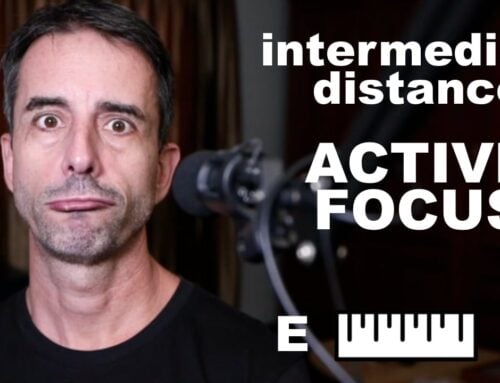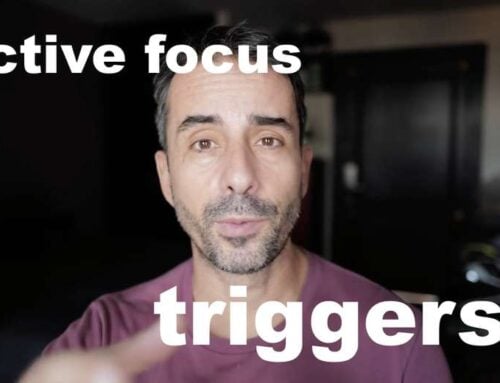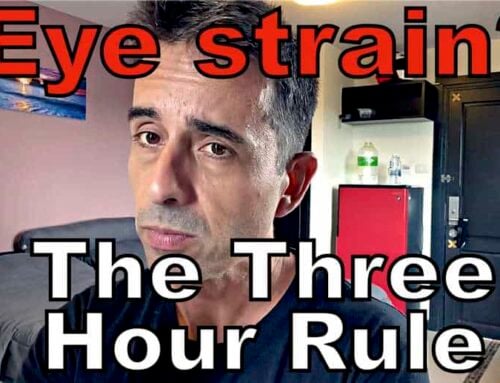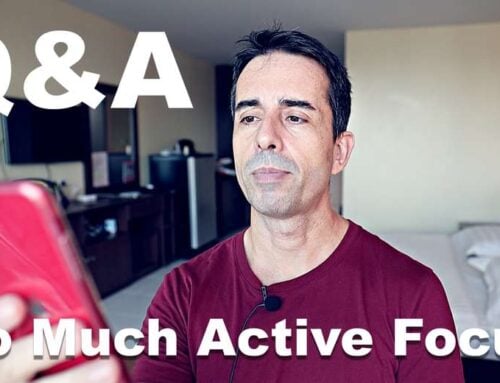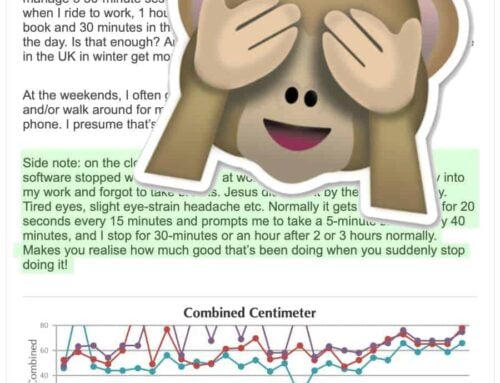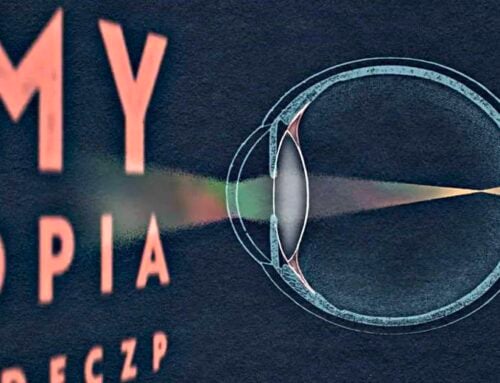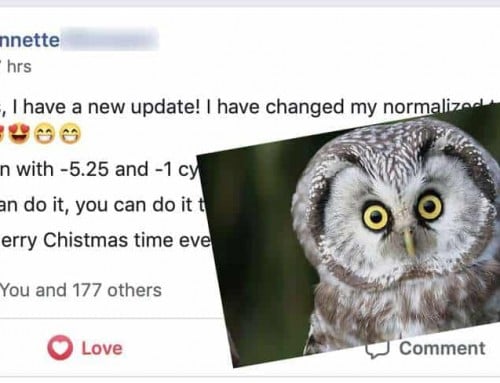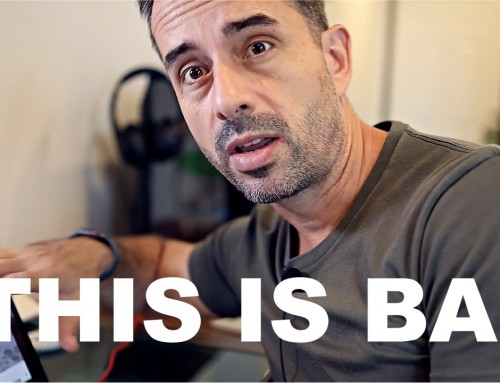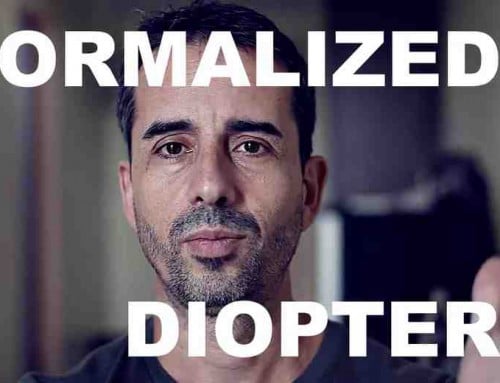There comes a point when you can reduce your differential (up-close reading) prescription more than you would think. Read on for the ‘how to’.
—
Alex and I agree on a lot of things. There are fundamental truths that simply apply to all, including blur horizon, active focus, and the whole subject of double vision covered in the 60’s installments of Alex’ course.
It plainly makes sense to follow the pace of the guided course since it incorporates all the necessary aspects of timing, habit building, and prescription changes. While it isn’t always expressed specifically, a lot of thought has gone into that course. You don’t want to really change your regular prescription until you have dealt with close-up. There is no need to worry about single eye and patching until all the bifocal activities are sorted. That and many other aspects are really well timed in the course.
One thing that isn’t in the course, and that Alex doesn’t specifically address, is the time when you can start to look at double vision as a primary driver of your close-up prescription decisions.
Quick note here: This will likely only make sense to those who made it to the 60’s installments, or have already dealt with close-up and double vision. If that’s you, read on.
You should be doing your prescription reductions exactly as Alex advocates. Go by your centimeter log, when your blur horizon starts to be further out than you need it for focus challenge, reduce the prescription. Eventually though, you will start loosing opportunity, just reducing based on your blur distance.
There comes a time when you get a lot of double vision clearing both close-up and for distance. You start to realize that just resolving blur doesn’t add up. You can get a whole lot of additional distance, since a wider range of the focal plane is in your double vision range.
That’s when things get interesting. You start to be able to move back a whole lot further than you could previously, and still clear text on your screen. It takes a bit longer (double vision), but you get a multiple of centimeter increase than you are used to.
This is when it’s worth looking at more aggressively reducing your close-up prescription. Instead of dropping a quarter diopter, go for half. If it ends up being too much, it’s not wasted, since you will eventually need it anyway. In many cases though, that larger reduction will make sense when you begin using it.
You will notice that you can still clear the distance as before, with very little extra effort. There is something new going on, when your blur distance and double vision distance “fuse” and give you a much larger net gain.
Don’t rush this. It’s probably not going to work for you after just a month or two into the course, and there is no sense messing with things that your eyes aren’t ready for. Keep these things on the list for later, when they will keep you motivated and engaged.
The timing is when you start to get more double vision, and a lot more distance clears than just your usual blur horizon. It may just be 1-4 centimeters in the first few months, but then after a while you start being able to go 6,8, 10 centimeters with some effort and time. That’s when you want to focus on double vision focus outdoors, making sure your normalized (distance vision) prescription is no more than at most 20/40 (less, ideally) on the Snellen. A month or two of that and you notice that up-close also you are getting quicker and more reliable results clearing larger distances. That’s when you want to reduce the differential more than you did in previous changes.
Bear in mind that this is just a quick summary and may or may not be enough for you to work out. I’m used to doing only in-person and individual consults, where it is relatively easy to assess the timing and help clients sort out this reduction. In the spirit of providing you with as many tools as possible here though, take this for what it’s worth. Hopefully you are benefitting from the suggestions here!
Cheers,
– Jake




